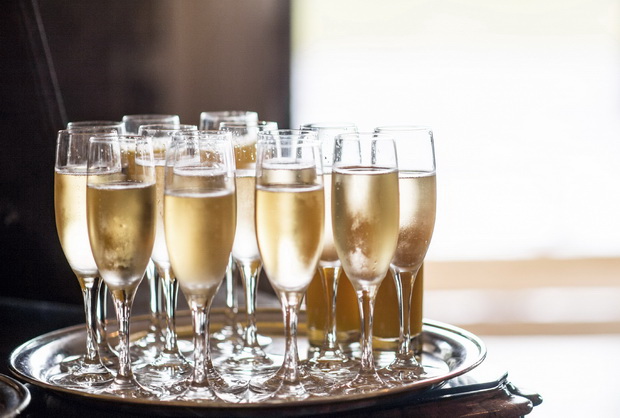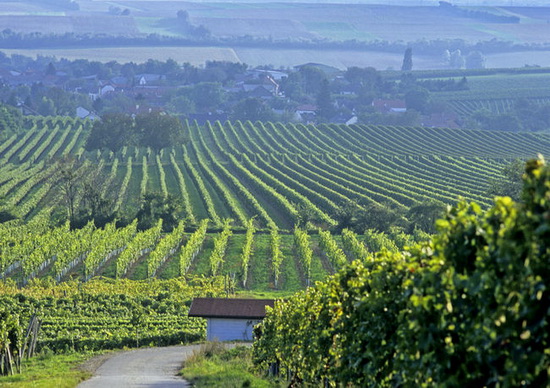By Rebecca Meïr- Liebman Chef & Somm
Austria is a little gem in the heart of Europe, with a population of only 8.7 million.
The country finds itself being surrounded by countries either without an instantly recognizable wine culture – Slovenia, Slovakia, Czech Republic – or by contrast, ones with world-famous, longstanding wine cultures: Italy, Germany, and to a lesser extent, Hungary.
This little powerhouse is fighting to get the recognition it deserves.
It hasn’t been easy.
For starters, their wine production is extremely small – their entire vineyard area is less than a half the size of France’s Bordeaux region. With a grape growing region that small, Austria’s wine production constitutes less than 1% of global production; and on top of that, of the wines produced, a full 75% are consumed domestically.
And this is only part of the reason you don’t find too many Austrian bottles on wine store shelves, here and around the world.
The Elephant in the Room
We have to talk about it; the anti-freeze scandal of 1985 dealt a terrible blow to Austria’s reputation. In the 1980s, most Austrian wineries mass produced inexpensive wines, selling much of it in bulk to neighbouring Germany.
Austria had suffered some difficult vintages and winemakers were unable to achieve the sweetness level they were looking for. Unfortunately, a handful of short-sighted and unscrupulous winemakers thought they could boost sweetness by adding diethylene glycol (DEG), a sweet-tasting chemical used in anti-freeze.
DEG is a poison with no business in wine, and even though only a small amount was added, the wine could have caused liver-, brain-, and kidney-damage. It certainly caused severe damage to the Austrian wine industry. In response to the tainted wine scandal, all Austrian wines were taken off shelves around the world.
In a bid to repair their reputation, the Austrian winemaking industry has since became hyper-strict regarding wine quality and production standards. And they didn’t just focus on tightening up quality controls, but also on what makes Austrian wines unique.

Over the last three years, I’ve reacquainted myself with Austrian wine; I’ve tasted a few thousand and have yet to be disappointed.
I’ve also discovered what makes the Austrian wine industry special and deserving of a second chance. And I’m not the only sommelier or wine writer to talk about this major improvement in and renewed importance of Austrian wines.
In 2014, Robert Parker awarded a 1995 Nikolaihof Vinothek Riesling his highest score of 100; more and more high-end restaurants from New York City to London are proud to include Austrian wines on their lists.
Here are a few aspects of Austrian wines that I think sets them apart from the crowd:
A Tradition of Embracing the New
The vast majority of Austrian wineries are small-scale family operations, where knowledge and techniques have been passed down through the generations.
Records of Austrian winegrowing and winemaking date back to about 700 BC.
Whereas many Old World winemaking countries have little or no interest in New World wine culture or viticulture, Austria’s wine professionals considers it extremely important to be exposed to new technologies and modern ways of thinking about wine and winemaking.
Coupled with modern ease of travel, Austria winemakers – a curious lot – can now easily visit both Old and New World wine regions, acquiring knowledge and progressive ideas that can be applied on home ground.
The Sekt Sommelier; Bubbly Personality Required!
Practically every wine region produces a sparkling wine. From the benchmark Champagne, to prosecco, spumante, or crémant.
In Austria (and neighbouring Germany) bubbly is known as sekt, and can be made from any of Austria’s 35 grape varieties. Austrian sekt is an expressive, aromatic wine, being produced based on variety: Riesling, Gruner Veltiner or Muscat.
Austrians take their sekt seriously, creating a diploma program specifically for Sekt Sommeliers.
The first sekt was produced in Austria in 1843 by Robert Alwin Schlumberger under the name Vöslauer weißer Schaumwein (white sparkling wine of Vöslau) and immediately became popular.

Since then, three tiers of quality have been identified: Grobe Reserve, Reserve, and Klassic.
Here’s how these tiers break down:
Grobe Reserve – is made in the traditional method, with a minimum 30 month fermentation on lees; grapes must be grown and pressed in a single region.
Reserve – is made in the traditional method, with minimum of 18 months fermentation on lees; and growing and pressing must be done in a single region in Austrian.
Klassic – may be produced with any method, with a minimum of nine months fermentation on lees; grapes must be grown in a single region, but may be processed elsewhere
A Belief that Wine is Only as Good as the Nature it Grows is
Surprising for many in North America where GMO use is widespread in agriculture, in Austria it is completely forbidden. Austrians have the utmost respect for nature which led them to organic farming.
A full 15% of farms and 10% of vineyards are certified organic, compared to only 0.6% in North America. A full three-quarters of Austrian vineyards participate in a minimum-intervention program supported by both the local and EU governments.
Minimum-intervention dictates as little as possible should be done to the grape and wine, specifically, employing minimal use of chemicals, including sulphur dioxide. This practice can go as far as eschewing pumps, which can “bruise” the wine.
A Unique Bunch; Austria’s Indigenous Grapes
Austria grows 35 grape varieties – 22 of these are white – and 70% of all wines produced are white. While we might not be familiar with their names, the flavours are familiar, natural and usually pleasant to the palate.
I’d like to introduce you to some of the grape varieties I recently had the pleasure to taste.

White Wines
Grüner Veltliner – accounts for 37% of Austrian vineyards, which makes it the most widely planted grape variety in Austria.
Planted mainly within the southern region, this light-bodied grape develops a bright acidity, with herbaceous notes, creating Grüner Veltliner wines of all quality levels; from light acidic and herbaceous, meant to be consumed young to oak-aged versions, which are fuller in body, similar to a white Burgundy style wine.
Neuburger – this diva-grape is losing ground to the more popular and less demanding, Grüner Veltliner.
Over the past 10 years, production of this grape has dropped by 40%, for two main reasons: one, the aforementioned growing popularity of Gruner Veltliner, and two, Neuburger is highly sensitive to frost and susceptible to disease.
Yet, when allowed to flourish and put to work, this thick-skinned grape produces a full, robust wine. When consumed young, without bottle aging, it produces spicy and floral wine; with age, the nuttiness comes out to create spectacular late harvest wines and Icewines.
Rotgipfler – curious to our ears perhaps, the name speaks to the vine’s pretty red leaf tips, a cross between Traminer and Roter Veltliner.
Vintners have increased the quality of the Rotgipfler harvest year over year; the grape is blessed with high acidity, usually well-integrated, with peach, pear, and almond notes.
Zierfandler – this is a grape that needs to be fully ripened to show well as a wine, which is partly why only 100 hectares of it are grown, making it very rare.
But when it does, it’s a thing of beauty with a rich body, soft acidity, and aromatic notes. It shows especially well when produced in the Trockenbeerenauslese (TBA) style, where notes of pistachio, almond and honey come through. Thanks to its natural acidity, this special wine is also appreciated for its ability to age very gracefully.
Red Wines
Zweigelt – is the most important red grape variety in Austria, which saw a dramatic increase in all red grape varieties at the end of the 20th century.
Lenz Moser, winery owner and Ambassador of Austrian wine, lead by example when he planted Zweigelt vines extensively.
As a result, the grape’s popularity and plantings, increased by 48.9% within 10 years. In 2016, it is the most widespread red grape variety in Austria.
When non-barrel-aged and consumed young it is high in tannins and when aged in barrique and matured it softens and shows great aging potential.
Blaufrankisch – is a grape variety that is ignored by everyone but Austrians, and it’s a shame.
It’s a dark-skinned grape that produces spicy wines, rich in tannins and full of juicy black cherries and raspberry notes.
For the uninitiated, I’d say it’s comparable to Syrah in warmth and spice characteristics, and to Gamay with its earthy, animal notes. Blaufrankisch are usually wines of great value.
St. Laurent – this dark-skinned, highly aromatic grape is not easy going. Fussy in the vineyard – it’s finicky about site and soil, and sensitive to frost – but very popular, non-the-less in the Carnuntum region which lies on the southern bank of the Danube River in eastern Austria.
Named for St. Lawrence Day – August 10th – which is the day the grapes start changing colour from green to red, this grape can produce dark-red wines that are fruit-forward, with flavours of ripe cherry, black currants and notes of oak; medium- to full-bodied; the best bottles boast tannins that soften beautifully with a few years of bottle age.
The next time you’ve got a hankering to explore a wine region, consider Austria for its unique wines and spectacular views…at the very least, take a trip down the Austria aisle at your local wine shop.
Rebec ca Meir-Liebman
ca Meir-Liebman
Sommelier & Consultant
As co-owner of Chef & Somm, the GTA’s only Bespoke Private Dining and Sommelier service, Rebecca has acquired over a decade of experience in some of Canada’s – and the world’s – top dining rooms.
She earned her hospitality, service and sommelier skills at top restaurants – Canoe, Luma, BLÜ Ristorante and Maple Leafs Sport & Entertainment – but Rebecca is always learning, tasting, and cultivating relationships with winemakers, local and abroad.
Her thirst for wine knowledge is a never-ending quest; Rebecca brings an unquenchable curiosity and authority to any dining experience. www.ChefSomm.ca
Austrian Wine and Food Pairings
Barbara Waxenegger (Austrian Wine Marketing Board)
5 courses 17 wines
1. Big Eye Tuna, Citrus, Endive, Wasabi
Hirsch Reserve Riesling Zobinger Heiligenstein “10TW” 2015, Kamptal
Alzinger Riesling Loibenberg Smaragd 2015, Wachau
Pichler-Krutzler Riesling Pfaffenberg 2012, Kremstal
Loimer Reserve Riesling Ried Langenlois Steinmassl “lOTW” 2010, Kamptal DAC
2. Ricotta Agnolotti, Butter, Perigord Black Truffle
Markus Huber Gruner Veltliner Terrassen 2015, Traisental
Schloss Gobelsburg Gruner Veltliner Ried “Steinsetz” Reserve 2015, Kamptal
Undhof Salomon Kremser Tor Alte Reben Reserve Gruner Veltliner 2015,
Kremstal
Alzinger Loibenberg Gruner Veltliner Smaragd 2015, Wachau
3. Hamachi, Brussel Sprouts, Chestnuts, Black Trumpet Mushrooms
Wenze/Furmint Ried Vogelsang 2015, Burgenland
Prieler Pinot Blanc Seeberg 2015, Burgenland
Sattlerhof Kranachberg Sauvignon Blanc 2013, Sudsteiermark Weingut
Wiener Gemischter Satz DAC Nussberg 2014, Vienna
4. Beef Ribeye, Sunchoke, Maitake Mushroom, Bernaise
Judith Beck Blaufrankisch Altenberg 2013, Burgenland
Morie Blaufrankisch Lutzmannsburg Alte Reben 2015, Burgenland
Uwe Schiefer Blaufrankisch Szapary 2012, Burgen/and
5. Dark Chocolate, Espresso, Chantilly
Nigl Gruner Veltliner Trockenbeerenauslese 2013, Kamptal
Feiler-Artinger Ruster Ausbruch 2013, Burgenland












